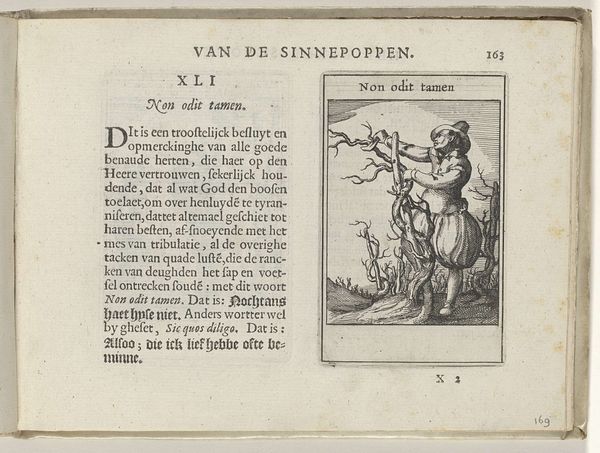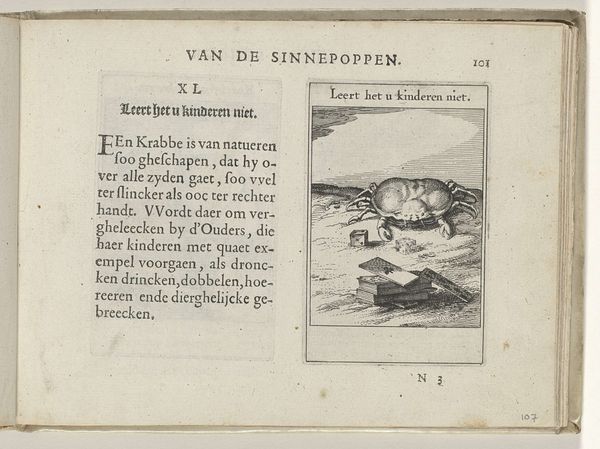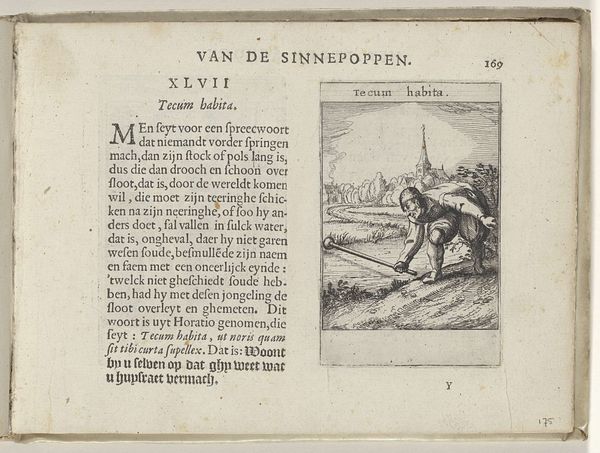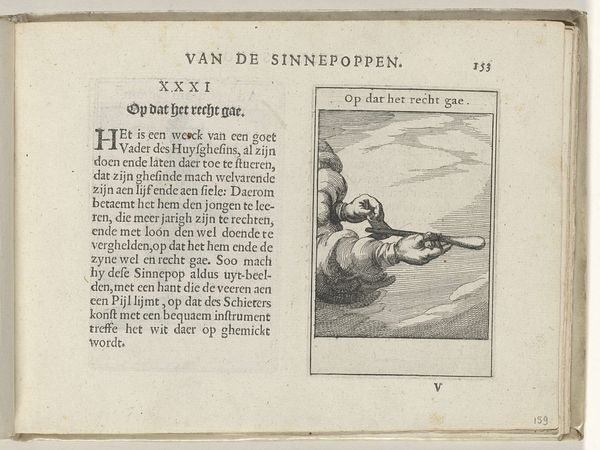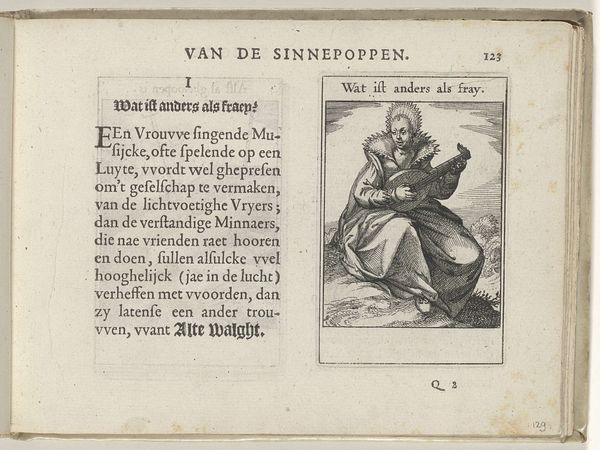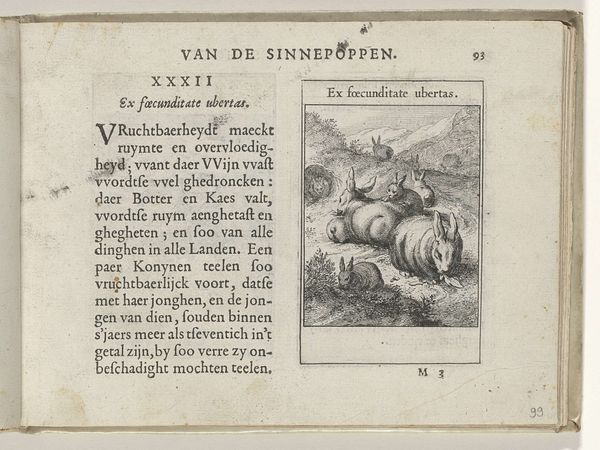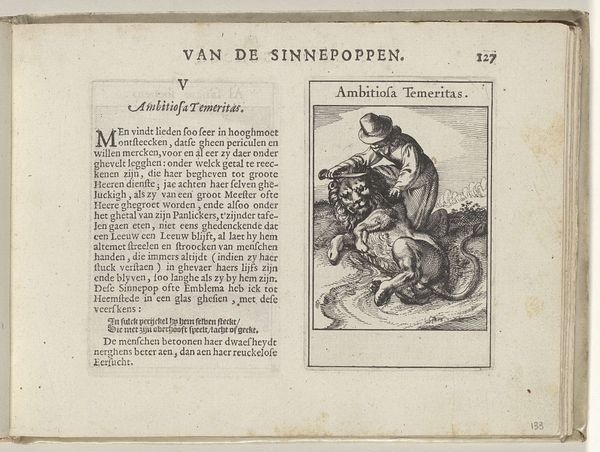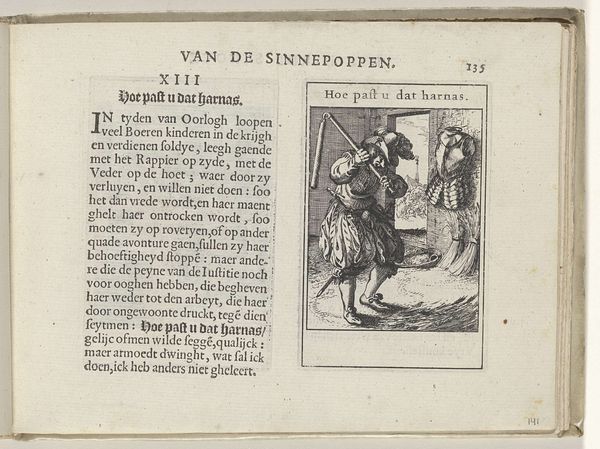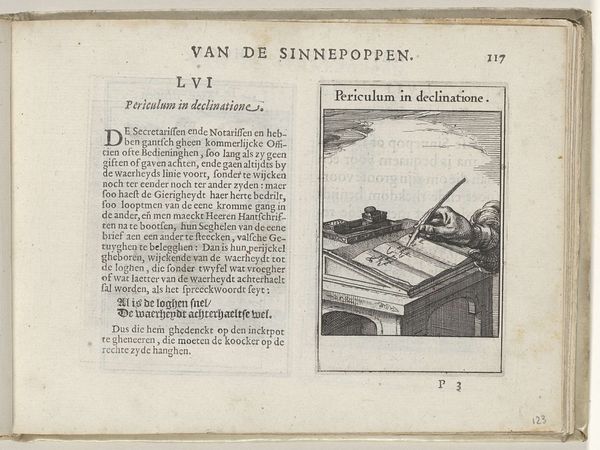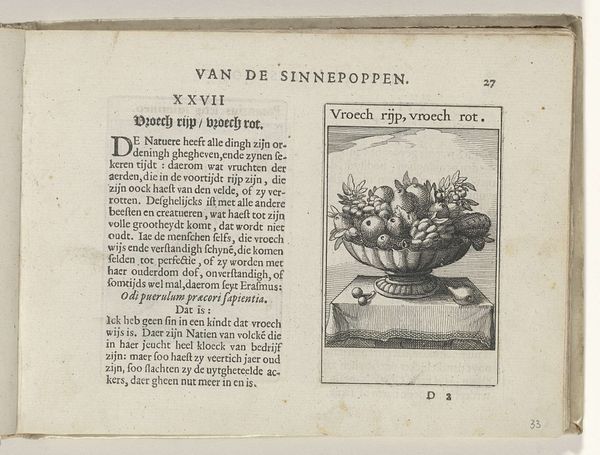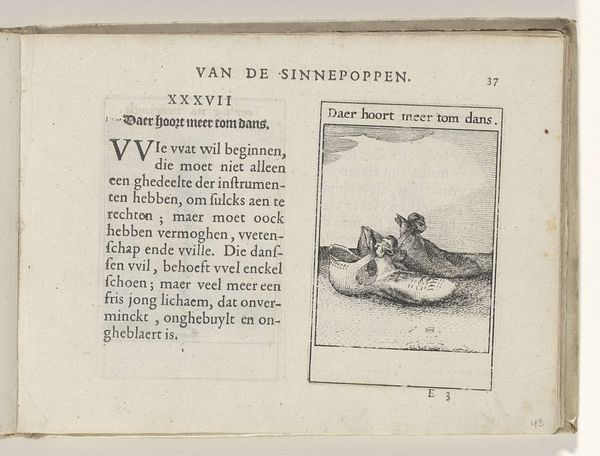
print, engraving
# print
#
old engraving style
#
line
#
genre-painting
#
northern-renaissance
#
engraving
Dimensions: height 137 mm, width 188 mm, height 95 mm, width 60 mm
Copyright: Rijks Museum: Open Domain
Editor: We're looking at a 1614 engraving by Roemer Visscher, titled "III Vroegh meester, laet knecht" housed at the Rijksmuseum. It feels almost like a moral lesson, seeing a figure hammering away at a globe-shaped object on top of what seems like a rocky surface. What do you make of it? Curator: Indeed. Its creation happened during a crucial period when print was not only a form of artistic expression but also a potent tool for disseminating socio-political commentary. It's likely tied to contemporary concerns about economic and social mobility in the Dutch Republic. The phrase suggests a shift in power, challenging existing social hierarchies. What implications does the choice of "globe" and a worker has for our understanding of social roles? Editor: That's a really interesting question! I hadn't considered the implications of hammering the globe. Is the work possibly referencing class and potentially anxieties around those roles? Curator: Precisely. It evokes that Northern Renaissance interest in detail, with strong social commentary woven through it. It could be commenting on a desire to dominate and suggests themes about labour and even greed. It may portray the pursuit of a mercantile empire and its potential destructive outcomes. Editor: So, the engraving becomes a commentary about more than individual greed, but about a rising anxiety connected to economics? Curator: Exactly. Visual culture gained societal agency and helped establish political and social arguments. The hammer blow is not just on an object, but on existing structures, suggesting reform or possibly destruction. Editor: I'll definitely have to revisit my initial interpretation. This engraving is a great demonstration of how socio-historical context gives a completely new perspective to art. Curator: I'm glad we had this conversation. Art from this era encourages a rich perspective on a variety of meanings that challenge pre-conceived social assumptions.
Comments
No comments
Be the first to comment and join the conversation on the ultimate creative platform.
